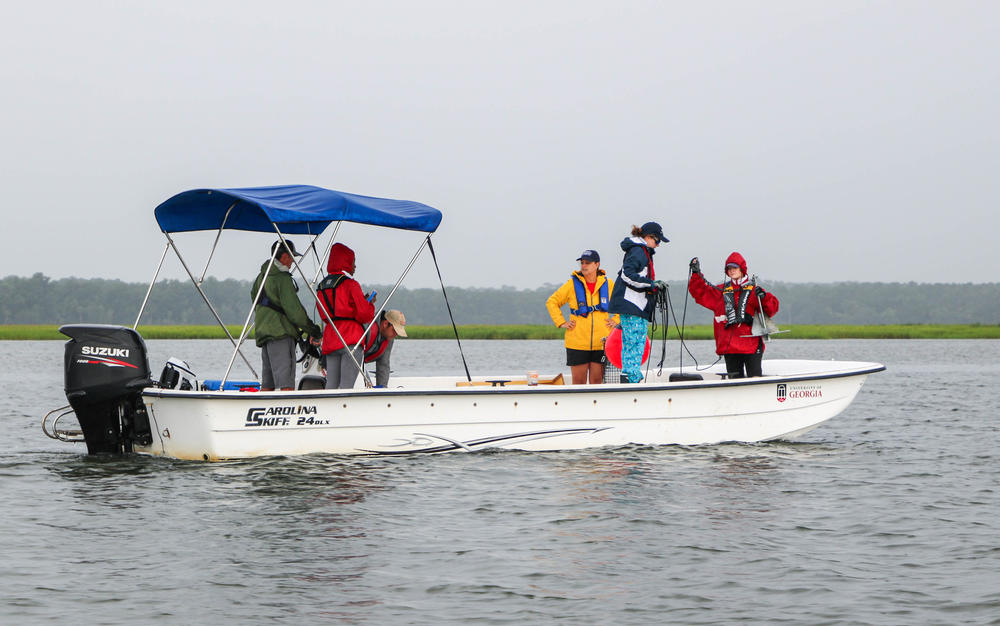
Caption
Kennesaw State graduate student Allyson Stiles (left) and researcher Kady Lyons of the Georgia Aquarium measure a shark as part of their study of the health of Wassaw Sound, the estuary near Savannah at the mouth of the Wilmington River.
Credit: Emily Jones



